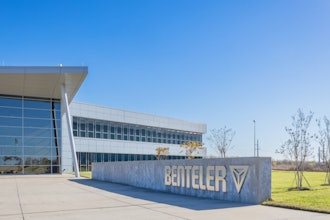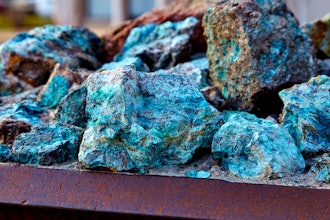In this July 29, 2010, file photo, a worker monitors water in Talmadge Creek in Marshall Township, Mich., near the Kalamazoo River as oil from a ruptured pipeline, owned by Enbridge Inc., is attempted to be trapped by booms. (AP Photo/Paul Sancya, File)
TRAVERSE CITY, Mich. (AP) — Federal regulators proposed a $3.7 million civil penalty Monday against the Canadian owner of a pipeline that ruptured in 2010, dumping more than 800,000 gallons of oil into a southwestern Michigan river.
The U.S. Department of Transportation's Pipeline and Hazardous Materials Safety Administration said the penalty against Enbridge Inc. would be the largest it has imposed. In a letter to the company, the agency listed 24 violations of hazardous liquid pipeline regulations, including failure to fix corrosion problems in the damaged pipe joint discovered as far back as 2004.
It also said the company had failed to detect the rupture for 17 hours after it happened during a scheduled shutdown July 25, 2010. Instead, Enbridge personnel twice restarted the line despite receiving multiple alarms and "indications of abnormal operating conditions" in its control center.
More than 680,000 gallons of crude was injected into the pipe during that period, "causing the total spill volume to greatly exceed Enbridge's worst case discharge scenario for this location," said the letter signed by David Barrett, director of PHMSA's central region office. The oil leaked into the Kalamazoo River and a tributary creek.
"We will hold pipeline operators accountable if they do not follow proper safety procedures to protect the environment and local communities," U.S. Transportation Secretary Ray LaHood said.
Enbridge, based in Calgary, Alberta, has 30 days to respond. It could accept the agency's findings and pay the penalty or request a hearing before an administrative judge.
The company said it was cooperating with investigators and would not provide detailed comment until analyzing the agency's letter.
"Enbridge appreciates the hard work and due diligence that PHMSA has put into this investigation," said Stephen Wuori, president for liquid pipelines. He said the company had improved its control center operations and training since the Michigan spill.
The National Transportation Safety Board is expected to issue a report next week on what caused the rupture in the 30-inch pipeline extending from Griffith, Ind., to Sarnia, Ontario.
Barrett's letter said the break happened on the day Enbridge was conducting the latest in a series of inspections, using a tool that was left inside the line until after it was restarted more than two months later.
Enbridge's control center in Edmonton, Alberta, was undertaking what was supposed to be a 10-hour shutdown of the pipe when the failure occurred around 6 p.m. EDT, setting off alarms, Barrett's letter said. Instead of implementing procedures for dealing with emergencies and suspected leaks, operators left the line idle.
Around 4 a.m. on July 26, 2010, a different crew restarted the line and soon received alarms and troubling messages: Pressure at the Marshall pumping station wasn't rising as expected and there was a significant imbalance between the volume of oil being pumped into the line and the volume it was delivering.
Still, personnel took no emergency actions and kept the oil flowing for an hour, sending more than 439,000 gallons of heavy crude into the pipe. After evaluating the situation they again started the line. Despite receiving more alarms, they injected nearly 243,000 additional gallons over a half-hour before shutting it down again.
"By this time the prospects of a suspected leak had been openly discussed by various ... personnel, yet the Enbridge procedures for a suspected leak were not executed," Barrett said.
At 11:18 a.m., nearly 17 hours after the failure, a natural gas worker with Consumers Energy notified Enbridge that oil had been spotted in a creek near Marshall. Only then did the control center close remotely operated valves, isolating a 3-mile-long stretch of line that including the rupture.
Outlining specific regulatory violations, Barrett said Enbridge inspections in 2004 had turned up corrosion problems along the weld seam of the pipe joint that eventually would fail. In 2005, "crack-like anomalies" were found on the same joint. No repairs were made. The agency assessed the largest portion of the penalty — $1 million — for that alleged failure.
Most of the other violations drew $100,000 penalties.
Despite the largest fine ever levied by PHMSA, the $3.7 million total is much less than what companies have paid out for other large spills. Officials have yet to determine the fine against BP PLC for Clean Water Act violations from the Gulf of Mexico spill, but they could range from $5.4 billion to $21.1 billion.
Anthony Swift, attorney for the Natural Resources Defense Council, said the pipeline agency lacks authority to impose meaningful punishment.
"With projects this big, a fine of less than $4 million becomes a minimal cost of doing business rather than a real motivator to follow safety standards," Swift said.
Enbridge has estimated it cleanup costs at about $700 million.






















